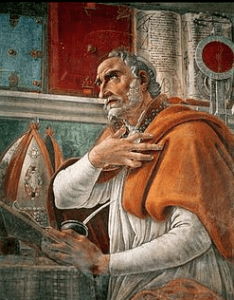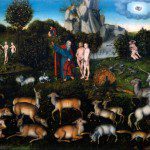 Sometimes debates about text get so much attention one forgets what the text is all about. It’s like the old “we’re here to drain the swamp not worry about gators.” Genesis 1-2 has been swamped by gators so much there’s no swamp left to drain! That is why someone like Tremper Longman’s study, “What Genesis 1-2 Teaches (and what it doesn’t),” in Reading Genesis 1-2: An Evangelical Conversation, is so valuable for all of us to read — just to remember the big picture.
Sometimes debates about text get so much attention one forgets what the text is all about. It’s like the old “we’re here to drain the swamp not worry about gators.” Genesis 1-2 has been swamped by gators so much there’s no swamp left to drain! That is why someone like Tremper Longman’s study, “What Genesis 1-2 Teaches (and what it doesn’t),” in Reading Genesis 1-2: An Evangelical Conversation, is so valuable for all of us to read — just to remember the big picture.
Tremper opens with a claim of inerrancy — that the Bible is wholly true — but the issue is what kind of truth is the “wholly true” teaching us. Here’s where’s headed: Gen 1-2 tell us about God and that God created but not how God created. There’s a huge difference.
So, first, we have to determine the genre of Genesis 1-2: what kind of literature is it? It’s a narrative, but not all narratives are historical narratives; there are fictional narratives; there are mixed narratives — some fiction and some history. The presence of figurative language (the days, the breath of life and Adam’s “rib”). There are strong connections — both as assumption and as criticism — of Ancient Near Eastern creation stories. This influences the genre question. The difference sequence of events in Genesis 2 tips our hat to two creation stories combined and not one creation story split. Genesis 1-2 fits with 12-50, but the two are not identical. So Gen 1-2 is historical but not completely. He calls it “theological history.”
What does it teach?
God, the God of Israel — the one and only God — created everything, including stars and humans. Creation is dependent on God and God is independent of creation; God is involved — hence, theism and not pantheism or deism. God is not gendered; humans are. Humans have a relationship to God and to one another. The relationship of man to woman is mutuality and equality, not superiority. Humans are images of God, statues of God in this world put here to represent God.
One of Tremper’s contributions is a sketch of creation stories elsewhere in the OT: Psalms 8, 19, 136, 24, 33, 74, 104; Proverbs 3:19-20; 8:22-31; Job 38:4-11. The conclusions? There are multiple accounts of creation in the Bible, not just one! They vary in description of what happened. There is lots of figurative language. They are not telling us how God created but that God is creator. Yahweh and none other is the creator.
On the historical Adam, Tremper does not think it is required for a proper reading of Genesis 1-2. Nor does he think Romans 5 requires a historical Adam and Eve; one can compare the fictional or representative with the historical (Jesus).











